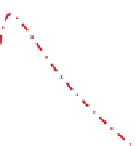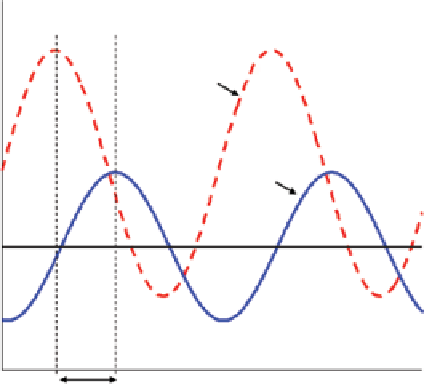Biomedical Engineering Reference
In-Depth Information
(a)
(b)
Excitation
pulse
Diffused photons
Snake photons
Ballistic photons
Source
Detector
FIgure 9.6
(a) ultrashort laser pulse propagation through scattering medium. (b) The pho-
tons received by a detector can be categorized as ballistic photons (photons travel along a straight
line), snake photons (photons travel slightly off a straight line path and go through very small
scattering), and diffused photons (photons undergo random walks and arrive last).
Excitation
Emission
Phase shift
φ
FIgure 9.7
effect of scattering media on a frequency-modulated optical signal.
Figure 9.6 shows the effect of the scattering property of media on a short incident
light pulse. The scattering broadens the pulse in time domain (TD) and the photons
received by a detector with different delay times. The received photons can be catego-
rized as ballistic photons (photons travel along a straight line), snake photons (photons
travel slightly off a straight line and go through few scattering events), and diffused
photons (photons go through random walks and multiple scattering and arrive last).
In frequency domain (FD), the scattering property of media can shift the phase of
the frequency-modulated signal. It also attenuates the detected signal, since the emitted
photons scatter in all directions and not all of them can reach the detector (Fig. 9.7).
The mean scattering free path is the mean distance a photon travels in each
scattering event in a medium. Scattering coefficient
μ
s
is defined as the reciprocal of
mean scattering path length and is the probability of a photon being scattered in a
medium per unit path length.




























Search WWH ::

Custom Search